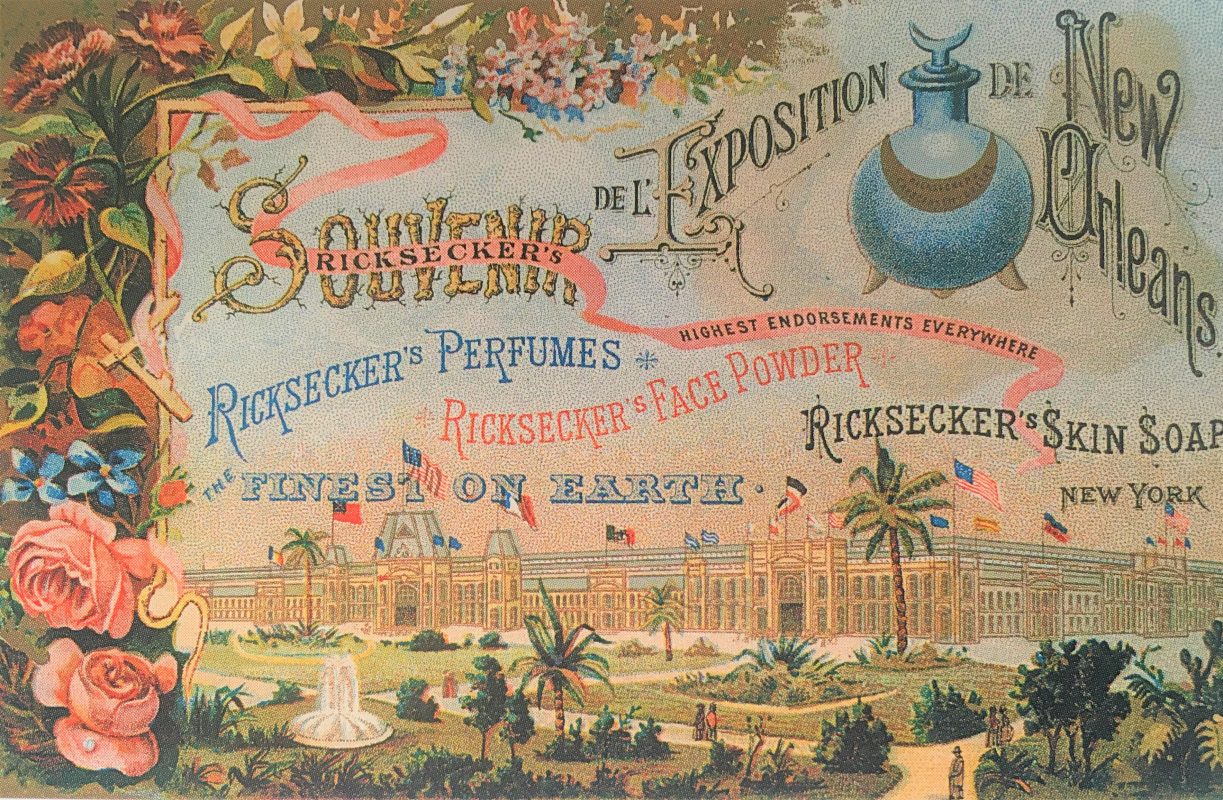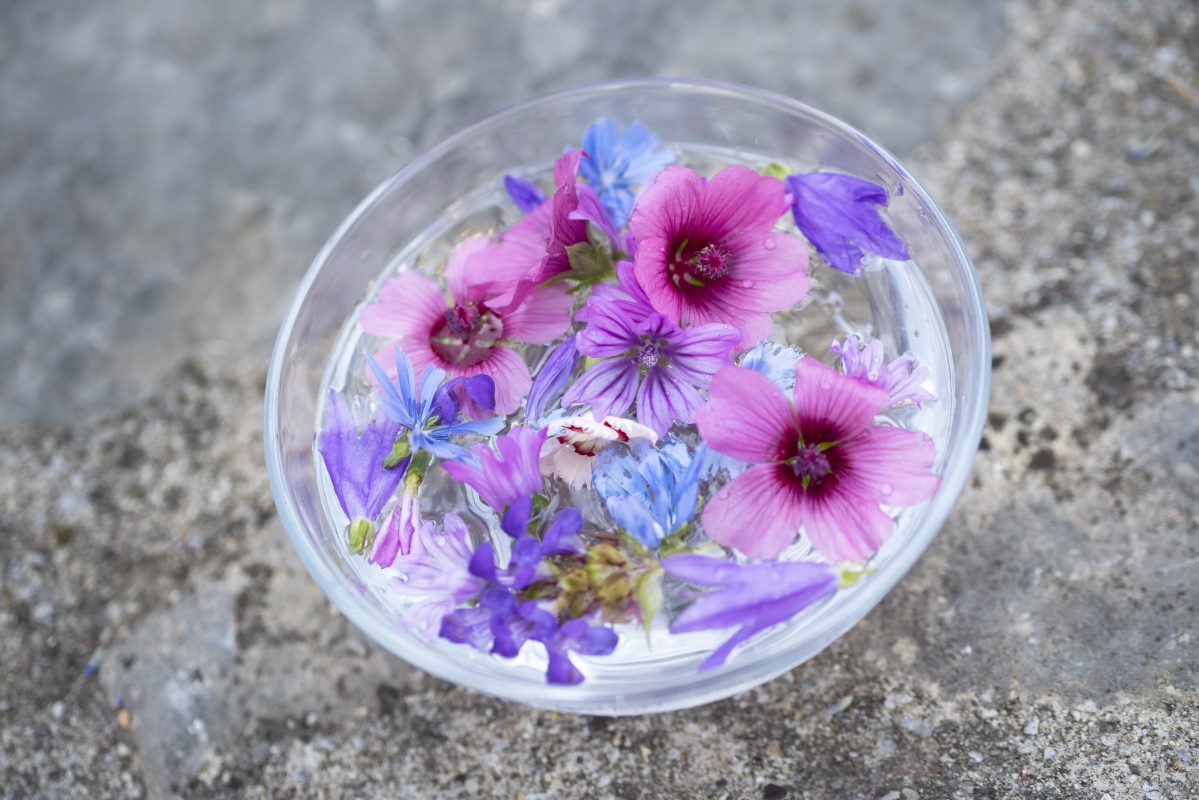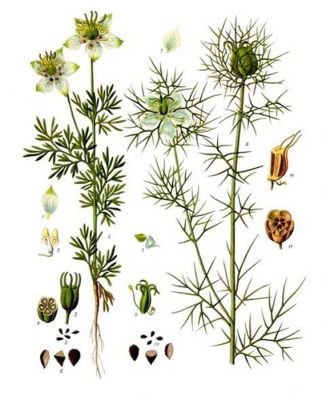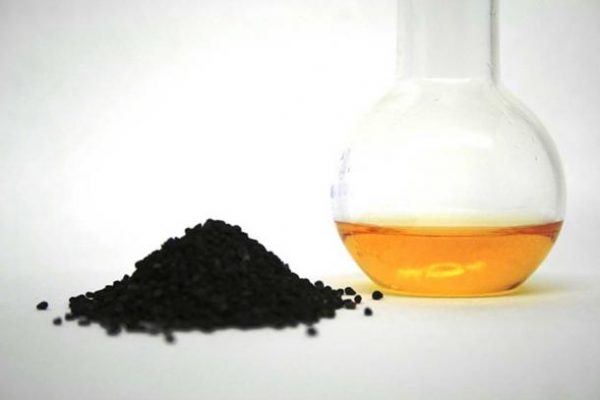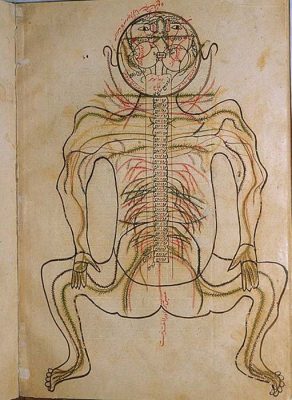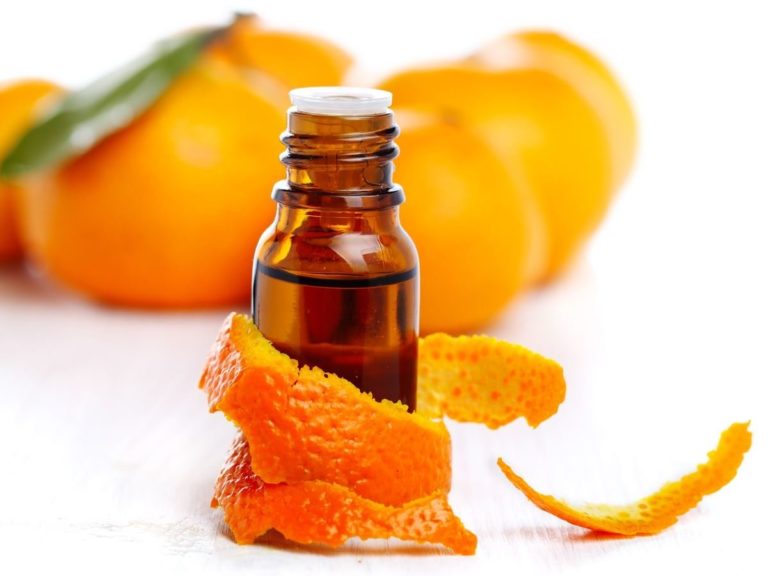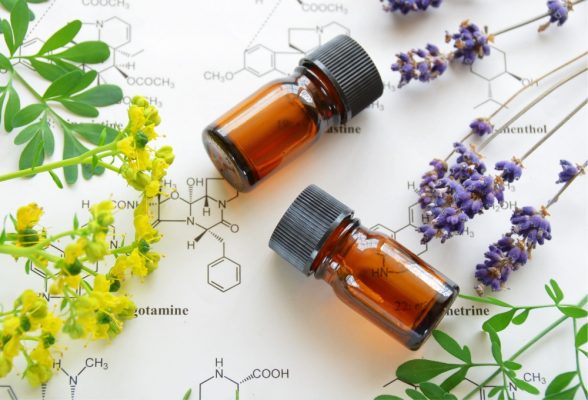The word perfume is used today to describe scented mixtures and is derived from the Latin word, “per fumus,” meaning through smoke. The word Perfumery refers to the art of making perfumes. Perfume was further refined by the Romans, the Persians and the Arabs. Although perfume and perfumery also existed in East Asia, much of its fragrances are incense based. The basic ingredients and methods of making perfumes are described by Pliny the Elder in his Naturalis Historia.
Mesopotamia and Cyprus
The Mesopotamian civilization might be the earliest users of perfume. A woman named Tapputi was the first recorded chemist and perfume maker, as mentioned in a Cuneiform tablet dating back from the second millennium BC.
The oldest perfumes ever found were discovered in Cyprus. Archaeologists uncovered a seemingly perfume factory that operated in 2,000 BC during the Bronze Age.

It covered an estimated surface area of more than 4,000 square meters. The Bible describes a sacred perfume in Exodus 30:22-23, which consisted of liquid myrrh, sweet-smelling cinnamon, fragrant cane and cassia.
Ancient Egypt
Perfumes were used by Egyptians for religious and beautification purposes. Egyptian priests were the first perfumers and they used aromatic resins to sweeten the smell of sacrificial offerings. Ancient Egyptians believed that burning incense connected them to the gods. They grinded up ingredients such as myrrh, jasmine, Frankincense resin, Nile lotus, sweet rush, wine, juniper and lilies to ensure the safe return of the sun God, Ra, from the underworld. Egyptians even had a god of perfume named Nefertum, who wore a head dress made of water lilies.
The rich elites in Egypt would adorn themselves of aromas made of scented oil to denote their status. By the way, ancient people used oils as bases for perfume, instead of alcohol that is widely used today. Pharaohs and priests were buried with their perfumes. When archaeologists opened tombs in 1897, they discovered perfumes which have even retained their original, sweet smells while their owners have rotten.

The Egyptians were also the earliest users of perfume bottles, and it dates to around 1,000 BC. They were the inventors of glass, and perfume bottles were one of the first common uses for glass.
During the Old and Middle Kingdoms, perfumes were used exclusively for religious rituals. But during the New Kingdom at around 1580-1085 BC, they were accessible even to the commoners. Perfumes were used in creams and cosmetics to soothe skin and cure inflamed skin or burns. It was also used to soothe anxiety and maintain balance between the body and soul – probably the early form of aromatherapy. And it did not take long when perfume’s romantic potential for seduction was discovered, as Egyptian women began using it as preparation for love-making.
Ancient Greece
Legend has it that Cleopatra had the sails of her boat coated with fragrant oils before setting out to the sea so that Mark Anthony could catch a scent of her arrival before laying his eyes on her. Cleopatra used fragrance to seduce Mark Anthony. The floor of her boudoir was strewn with roses that lead to her bed.
The Greeks were the first to create perfumes that can be worn on the skin. They grounded aromatic plants, resins and herbs and blended them with oils, creating everyday fragrances. Greeks were also the first to use animal-based scent ingredients like musk and ambergris.
They were also body-conscious. Hippocrates, the father of medicine, was a fan of personal hygiene. He prescribed fumigation and the use of perfumes as a way to prevent disease.
Ancient Rome
The Romans did not invent perfumery, but they gave it its name. Perfume came from the Latin word “per fumum,” which means “through smoke.”
Though it is used enduringly in religious rituals, perfume was also used to anoint the body generously. They also use it in beauty products, public baths and even the soles of feet. By estimation, the Romans in 100 AD were using about 2,800 tons of frankincense and 550 tons of myrrh a year. During the reign of Emperor Nero, he wanted the fountains to trickle with rosewater.
Ancient Persia and Middle East
The ancient Persian and Arab chemists had a significant contribution to the production of perfume, which became a stepping stone for Western perfumery industry. Islamic cultures have learned to extract fragrances through steam distillation and introduction of new raw materials. A Persian chemist and philosopher named Avicenna extensively experimented with distillation to make better scents, and he was the first to discover the chemistry behind perfumes that are not oil-based.
The rise of Christianity, however, ended the use of perfume around the Middle East in daily life and religious rituals. Meanwhile, the Arabs kept the tradition alive and dominated the perfume trade for hundreds of years. As traders, Muslims had access to a wider variety of spices, herbs, resins, woods and animal fragrance materials. Many of the herbs and flowers used in perfumery until today were first cultivated by Muslims.
Perfume usage in the Islamic cultures was initially a religious duty, and it has been documented as far back as the 6th century. As recorded in the Sahih Bukhari, Muhammad has commanded male Muslims to take baths every Friday and use perfume.
Eventually, perfume was brought to the European courts through Al-Andalus in the West, and by the crusaders in the East.
Medieval Europe
Records of the Pepperers Guild of London showed that they traded with Muslims in spices, dyes and perfume ingredients back in 1179.
Medieval Europeans from the 1200s to around 1600s carried a pomander – a ball of scented materials – to protect themselves from infection and to keep the air clean. They literally thought that bad air can cause sicknesses, and these fragrant balls were their life-savers. This idea was most probably brought by the Arabs who brought them fragrant ingredients.
However, it was the Hungarians who introduced the first modern perfume. Created for Queen Elizabeth of Hungary in 1370, the modern perfume was made of scented oils based on an alcohol solution. It was known throughout Europe as Hungary Water, and contained a fusion of aromatics such as lavender and rosemary.
The art of perfumery prospered in Renaissance Italy. Italians discovered how to create aqua mirabilis, a clear substance made of 95% alcohol and infused with a strong scent. Because of this invention, Venice, Italy, became the center of world perfume trade for hundreds of years.

Italian refinements were brought to France by Catherine de Medici, an Italian noblewoman who came to the country to marry the French king. Along with her she brought her personal perfumer, Rene le Florentin, who had a laboratory connected with her apartments by a secret passageway. Her leather gloves were perfumed with musk and civet, and it became a sensation.
The use of perfume in France became widespread when Louis XIV wanted scents to be sprayed everywhere in the palace. He commissioned his perfumer to create a new scent for every day of the week. Visitors would easily be doused with perfume upon entry on the palace, which is why it was called “the Perfumed Court.” Even the fountain’s water was scented with perfume.
Perfumers competed with each other to supply the “Perfumed Court” with scented goods. Later on, they began to sell their products widely on the streets.
Queen Marie Antoinette was also a leading figure in perfumery. Two of perfumed fragrances have withstood the test of time: the Sillage de la Reine (In the Wake of the Queen) and Jardin Secret (Secret Garden).
With the invention of eau de cologne in 1709, perfumery has advanced and revolutionized. It was dearly loved by French Revolution leader, Napoleon Bonaparte.
The revolution had not, in any way, lessened the French’s taste for perfume. Perfumers have lost most of their affluent customers due to guillotine, but Bonaparte became a number one consumer. He had a standing order with Chardin, his perfumer, to deliver him 60 bottles of perfume every month. He loved its cooling qualities and particularly favoured the scent of rosemary.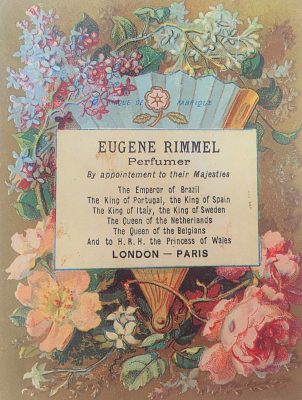
Victorian era
When Queen Victoria of England came to power, she associated too much perfume and cosmetic used to the fallen women, prostitutes and those with questionable morals. Because of that, fragrances became milder, delicate and floral. These were feminine and often made up the scent of a particular flower like roses, violets, lavender, jasmine and honeysuckle. Aromatic herbs were used too.
The modern perfumery we know has its roots in the Victorian era. Chemists came up with breakthrough scents that took perfumery to a whole new level. They began to work on the first fragrances that blended naturals and synthetics.
In 1889, Aime Guerlain conjured up the legendary Jicky, the pioneering scent behind sublime and sensual fragrances. When it was launched, it gained unexpected attention. His nephew, Jacques Guerlain, came up with the sensational blockbuster, Shalimar. It was infused with vanilla and it worked as an aphrodisiac.
Guerlain gained a number of competitors because of it. But his biggest competitor was a young man named Francois Coty, who started creating many synthetic essences.
20th century until today
Coty experienced a lot of rejection at first. The first order for his of La Rose Jacqueminot fragrance was only a dozen bottles. In 1904, he tried selling it to perfumeries and department stores, but he was always sent away. Legend has it that Coty smashed a bottle of the perfume after being turned down again, but he didn’t expect that the clients would be spellbound. Customers swarmed the area and bought all of his stock of La Rose perfumes.
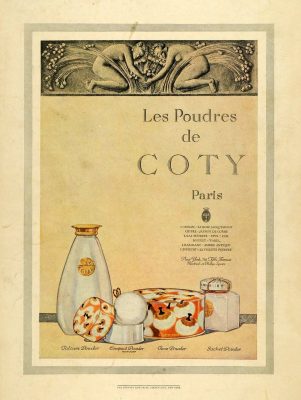
After the experience, Coty realized that an attractive bottle is an important selling factor. He teamed up with both Baccarat and the great Art Nouveau jeweller Rene Lalique to design bottles and labels for his fragrances. Besides pioneering bottle designs, Coty also had other pioneering acts in the world of perfumery: he was the first to provide testers to allow customers to sample perfumes before buying it, and the first to come up with fragrance sets – perfume bottle with matching same-scented soap, cream, powder etc. – in a gift box. He was also responsible for making perfumes available in the mass market and affordable for the middle class, as perfumes before were only available to the rich and royalty.
In 1921, Coco Chanel revolutionized the way women smell. Her Chanel No. 5 is still one of the world’s most popular fragrances used until today.
Chanel loved the scent of soap and freshly-scrubbed skin, serving as an inspiration for her signature fragrance. She hired perfumer Ernest Beaux to create scents to pick from. Beaux lined up his samples from one to five and 20 to 24. She picked No. 5 and the rest is history. According to stories, the scent No. 5 was actually a result of a mistake by Beaux’s assistant who used 10 times aldehydes as he should. But because No. 5 smelled clean and soapy like the scent of a hot iron on linen, it especially appealed to Chanel.
The 1930s saw the arrival of more floral and leather fragrances like Worth’s Je Reviens, Caron’s Fleurs de Rocaille and Jean Patou’s Joy perfume. Successful masculine scents also came into existence like Caron’s Pour Un Homme and the first Oriental fragrance for men, Old Spice. French perfumery was at its peak during the 1950s, with designers like Nina Ricci, Christian Dior and Pierre Balmain launching their own fragrances.
Perfume was made more affordable for the ordinary people throughout the 1960s to the succeeding decades. Brands like Yves St. Laurent, Revlon, Max Factor, Coty, Yardley, Estee Lauder, Avon, Faberge have launched their own perfumes. In the 1980s to 1990s, refreshing scents were brought about by Calvin Klein, Ralph Lauren and Issey Miyake, as well as the other formerly mentioned perfume makers.
Nowadays, it is popular for celebrities to launch their own fragrance line. Overall, the perfume industry has undergone several changes in style, material, technique and pricing. All these have brought forth the modern fragrances, but the industry still incorporates creativity, romance and mystique along with clever marketing to appeal to the masses.

